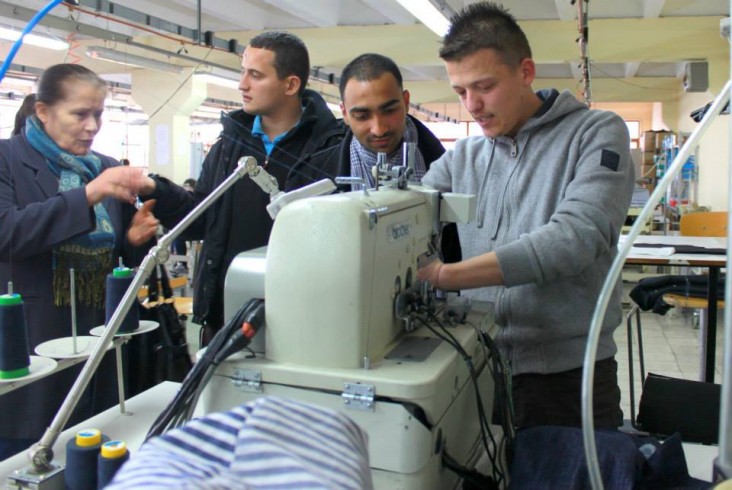
March 2015—Albania's textile and garment sector accounts for 45 percent of total exports and provides employment to a large number of workers. The government is now looking to the industry to increase employment opportunities, particularly for youth and women.
Despite the potential for growth, a number of constraints need to be addressed, including a lack of qualified garment machine maintenance technicians. The few technicians operating in the market were trained before the 1990s and are in very high demand. Most work as part-time specialists for a number of companies. Some companies also bring technicians from elsewhere in Europe to repair specialized machines.
Yet several vocational programs are full of Albanians in need of training and skills to gain employment. Vocational high schools run by the Ministry of Education and 10 professional training centers under the Ministry of Welfare are located throughout the country, some in cities near garment manufacturing firms.
Centers could offer short courses of two to four months with on-the-job practice, but lack the machines and effective contact with the garment industry to deliver such courses.
USAID, through a local NGO partner, Assist Impact, approached Professional Training Center #1 in Tirana with an idea in September 2013. The center would offer a basic and advanced course that included mandatory practicums in local companies. Assist Impact would write the curriculum for both the basic and advanced level courses and obtain approval from the appropriate ministry. Following the completion of the course, each participant would be offered 80 hours of internship experience at a garment or textile firm.
The center was enthusiastically on board.
“Before we started, there hadn't been any technical training in garment machine maintenance for decades," explained Hanëme Mata, director of Professional Training Center #1.
Assistance did not end with just developing the curriculum. In order to link the center with the garment industry and ensure practical skills-building, Assist Impact offered small matching grants to four leading garment manufacturers for the purchase of equipment in return for donations of used machinery to the center. It also negotiated with the firms to provide internships to the course participants.
Assist Impact hired a master technician for garment machine maintenance to deliver the course. At the same time, the center had one of its instructors attend the course so she could conduct the course once the assistance was finished. Lastly, the center received tables, a projector, tools and other amenities required for the course.
Soon after the course ended in July 2014, eight of the 14 participants found jobs or self-employment. The center started a second course without any assistance, hiring the master technician to teach together with the center’s instructor.
“We're continuing to offer this course because our trainees can find jobs,” said Mata. “It without a doubt responds to the current needs of the job market here in Albania.”
Other constraints to the country's garment industry include fierce competition as other countries attract clients with lower costs, a full package of services from design to distribution, and higher quality production. The vast majority of Albanian garment firms also lack advanced production equipment such as automatic cutting lines and computer-aided design/computer-aided manufacturing (CAD/CAM) technology.
The assistance is part of USAID's Building Human and Institutional Capacity project, which runs from September 2012 to January 2016. The project is designed to strengthen the institutional, governmental, non-governmental and private sectors in Albania as the country strives to bring about reforms necessary for European integration.
LINKS







Comment
Make a general inquiry or suggest an improvement.